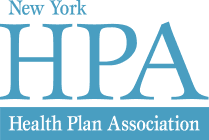The New York Health Plan Association (HPA) today called the 17.3% average increase for individual policies and 12% for small groups proposed for 2017 health insurance premiums necessary to maintain financial stability of New York’s market, adding that the rates are justified based on the particular circumstances of each plan.
“The 2017 rate submissions reflect increases that are the direct result of the underlying cost of care and marketplace changes that continue to impact health plans’ operations,” said Paul F. Macielak, HPA president and CEO.
Examples cited by HPA include:
- Prior year losses resulting from cuts imposed by the Department of Financial Services (DFS), which for the past two years has reduced proposed rate increases to “below the average increase in health care costs.”
- New analysis released this week from McKinsey & Co. showing continued health plan losses on individual plans. Losses for 2015 were between -9% and -11%, on top of -4.8% losses in 2014.
- A new S&P Healthcare Claims Index report showing continued health care spending growth in 2015, much of which was fueled by rising drug costs that increased 16% in 2015. A key factor in rising drug spending is the price of high cost drugs including those used to treat Hepatitis C.
- The phase out of transitional reinsurance and temporary risk corridors program. These programs, created by the federal Affordable Care Act, have played a critical role in promoting stability and competition in the market, and their phase out will increase rates for 2017.
- Higher than expected utilization of services, resulting in higher costs for care delivered.
- Costs absorbed by plans as a result of last fall’s abrupt closure of Health Republic.
“Everyone focuses on the rates plans are requesting while the factors that drive premiums continue to go unchecked,” said Macielak.
HPA also noted that while plans’ applications must include actuarial assumptions and methodology to support their rate requests, DFS has not provided this information in its written rate determinations, despite requirements in state law to do so. HPA said such disclosure by DFS is crucial to ensuring New York’s rate setting process is fair and accountable.
“As lawmakers look to wrap up their work for the 2016 session, we ask they take up legislation to reform the rate setting process and ensure market stability that will protect consumers’ choice of plans and access to affordable health care coverage,” Macielak added.
